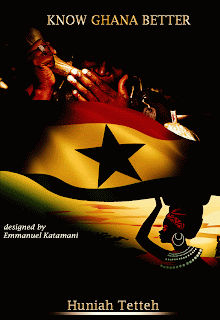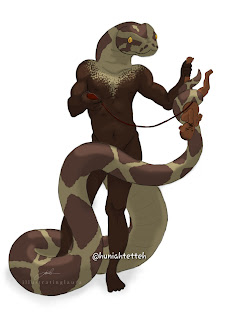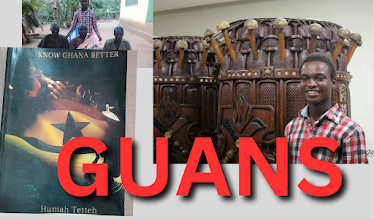THE NYAGBO & TAFI PEOPLE OF GHANA
The people of Nyagbo and Tafi are related to each other. Their languages are closely related to each other and they fall under the Volta-GTM languages. They live at the upper parts of the Volta Region few kilometres away from Hohoe. Their regions are very mountainous as they first settled on mountains before later descending to their present settlements. They all trace their origin from present day Akan lands.
TAFI-BAGBOR:
The people of
Tafi also called Bagbɔ lived at Asene before getting to their present
settlements. They had to migrate as the Akans came in their huge numbers and
they were outnumbered. They moved to the present day Kwahu mountain areas and
from there to Asrabigabi within the valleys of Kwahu. Currently, the Volta Lake
has overflown its boundaries and it has covered the ancestral home of the Bagbo
hiding so many ancient Bagbo relics. The Bagbo crossed the Volta Lake by Raft
in a bid to move far away from the Akans so during their movement, they were
hoping to see a mountain on which they could quickly climb to signify that they
are far away from the reach of the Akans. Other groups of the Bagbo people took
a different direction as they did not migrate with the Bagbo people and they
are the people of Nyagbo.
There is a
river at Bagbo which they called the Dai river so they had to cross the river
before getting to their intended mountainous home. As they crossed the river
they saw a huge woodlike structure on which they walked on to cross the river.
Oral history of the Tafi people indicated that it was a giant snake and not a
log as they had thought so; before the last person could cross the River Dai;
the snake got hold of him and killed him. Soothsayers among the Bagbo
travellers quickly began to incite incantations of which one of them got
possessed and spoke these words “I am Abodai, if you will worship me, all of
this land is yours. I will be your god and no one else.” Abodai demanded a
yearly human sacrifice of which the people had no choice than to agree to.
The family of
the man who was killed by the snake became the oracles of Abodai. They were to
make their yearly human sacrifice but as to who would volunteer to be killed
was the issue so Abodai was pleaded with to accept the yearly sacrifice of a
goat rather than a human being. He agreed to it and this was done yearly until
it got to a time when people were reluctant to volunteer their goats to be
sacrificed so then the oracles opted to capture stray goats for the yearly
sacrifice. My source of information chanted a song which was normally sang when
the stray goat is to be captured and sacrificed “Asuropija, Asuropija” where
“pija” means “goat” in the Tafi language. On that day, people do not go to
their farms. This continued for long until one day when Abodai was called he
never came out. Many have wondered why the giant python has never come out till
date so what they did was to cook the killed stray goat and eat it by the Dai
River to preserve traditions.
Later, the
brothers of the Bagbo who took on the different direction were driven with the
Ewes to their present settlement. They did not easily recognise one another but
then the Bagbo who were still on the mountains saw the people coming in so they
saw them as threats to their very existence. In order to defend and protect
themselves they would wait till evening and then they would go and cut off the
heads of their supposed treacherous invaders. They executed those plans not
knowing they were not a threat to them. Those were Ewes with the Nyagbo.
The Ewes would
always wake up to the realisation that some of their brothers had been beheaded
and as this continued; they called their invisible enemies the “Tafi ɛwe”
meaning “head stealers.” Later they discovered the Tafi people and a consensus
was reached. They even told the Tafi people that they came with their brothers
from Agunyagbo as they noticed the people of Tafi-Bagbor spoke similar to the
Agunyagbo among them. Nyagbo is derived from Agunyagbo and according to the
Tafi side of the story, as the Ewes came to Northern Volta so did the Nyagbo
also move with them. Likewise, the Nyagbo spoke a corruption of the Tafi-Pegbor
language. Then the Avatime had also settled so they always refer to the Nyagbo
people as “Ba trɔ Gbɔ” which means “those who deviated from the Gbor language”
that is Batrogbor which has come to stay as the name of the Nyagbo people hence
we have Batugbu and they speak the Tutrugbu language.
The Tafi
people have four Vassal states and they are Tafi-Agome which is the paramouncy
of the Tafi traditional area. The others are Tafi-Bador corrupted to read
Tafi-Mador, Tafi-Abuipe and Tafi-Atome. It is at Tafi-Atome that we have the
monkey sanctuary.
In the early
parts of the 1960s, the people of the Tafi and Nyagbo traditional area fought for
an identity as they had been assimilated into Ewe culture and traditions and
people barely knew of their existence. With time, people like Mr. Agbley Ruskin
Sylvanus Nelson and other vibrant men of the Tafi traditional area came
together to spearhead their quest for recognition and identity and with time
came out with the Dai-tuntsokey festival. Dai-tuntsokey simply means “crossing
of River Dai.”
The
celebration of the Dai-tuntsokey festival rotates among the four main Tafi
communities in the order: Agome, Atome, Abuipe and Bador. But then,
Dai-tuntsokey seems to have lost significance with the people of Tafi as the
last time it was celebrated was in the year 2010.
Presently the
Tafi traditional area is a multilingual community with the natives using Ewe
and Pegbo for daily communication and English for very official functions. The
Tafi language shows no sign of extinction. The people of Tafi call the Avatime
language Behu. Behu is not as closely related to Tafi as Tutrugbu. Tafi like
most Ghanaian communities has clans which vary from the four Tafi communities.
The people of Tafi-Agome and Tafi-Abuipe share the same clans. Those of Tafi-Mador
have the Oplosi clan and the Kagboem clan. Members from the Mador-Oplosi clan
went to establish Tafi-Atome and they rule Atome.
NYAGBO - BATUGBU:
The people of the Nyagbo
traditional area also trace their origin from present day Awutu in the Central
Region. From Awutu, they travelled to Osu in the Greater-Accra Region where
they stayed for years but then tribal oppressions forced them to move to an
area around Akosombo in present day Akwamu land called Adzina. They stayed at Adzina for some
time then they continued to Tᴐsrᴐɛ near Anum in the Eastern Region. From Tᴐsrᴐɛ, they moved to a
place called Agu in Togo which is also referred to as Agunyagbo.
From Agunyagbo they
were driven with the Ewes up north to the Volta Region. The Nyagbos were under
the leadership of one Kalegbe who was a hunter. They had wanted to go back but it was
virtually impossible as they passed through jungles and bushes to get that far.
The Nyagbos and the Ewes encountered the Tafis. Not all of the Ewes moved up
north with the Nyagbo but then a section of them as they (the Ewes) were
numerous and wanted to establish their settlements over a vast territory.
Oral history furthers
that when the Tafis spoke, the Ewes could tell that the languages of the Tafi
and Nyagbo were very similar but then they had no way of communicating with the
Tafi people unless the Nyagbo spoke with them.
The Nyagbo had been in
contact with the Ewes for a long time so they could speak both Ewe and the Gbor
language. The Nyagbos first settled around the valleys of the present home and
they named the place Eweto which is in the Ewe language to mean “valleys.” They
subsequently ascended the mountains to make their homes but later on, some of
them descended due to population increase.
In the course of the
Nyagbos migrating to their present home, they had contact with different
languages especially Guan languages and this could explain for a few Guan words
in their language. The language is not Guan and the Guan words are countable
and noticeable examples would be “ba” which means “come” and “anɛ” meaning “who”
which are the same as it is said in Guan languages.
Nyagbo has tourist
attractions and they would include the historical caves, waterfalls and a
mountain top experience locally called Amitodzi’ where visitors can have a beautiful
panorama of the surroundings including the Dai river at Tafi.
The Nyagbo traditional area has 8 principal communities and they are
Fiafe, Konda, Sroe, Odumase or Emli-Nyagbo, Anyigbe, Kume, Agodome,
and Gagbefe. Three (3) of these communities namely Sroe, Konda and Fiafe are
located on the Nyagbo mountains with the rest in the valleys. Nyagbo-Gagbefe is
their paramouncy.
History continues that
when they ascended the mountains they first called their home Sroe. Then they
extended to Fiafe and Konda. Fiafe simply means “home of the chief.” Konda also
means “junction.” After living on the mountains with
his family for a long time, one young man called Gagbe wanted to start his
family at a different location so he built a hut in the Nyagbo valleys. He farmed,
lived there and started a family. The place was named after him thus, Gagbefe
meaning “Gagbe’s home.” Subsequently more and more people began to move from
Sroe so to extend their territory.
The
communities of Agodome and Anyigbe were also established. Agodome simply means
“underneath the coconut tree” which is put in Twi as “Kubease” hence the
Nyagbo-Agodome community. When you stand on the mountains and you look beneath
the Eweto valleys, there is the Nyagbo-Anyigbe community which simply means
“beneath Nyagbo or below Nyagbo.” The traditional Nyagbos are on the mountains
thus, they saw Anyigbe to be “beneath Nyagbo” hence the name Nyagbo-Anyigbe.
The Nyagbo communities have been sectioned into Lower
Nyagbo and Higher Nyagbo and as rightly guessed, Lower-Nyagbo are in the
valleys whiles Higher-Nyagbo are on the mountains and this to some extent has
played a major role in the formation of dialects as Higher Nyagbo speak a
dialectic variation of the Tutrugbu language thought to be the pure language.
Lower Nyagbo also has its dialect yet, the differences do not stop them from mutually
understanding themselves.
Credit: Credit:
Mr. Agbley Ruskin Sylvanus Nelson, Tafi-Mador
COMMON COURTESY IN
PEGBOR
|
BULUGU |
BUMILI |
WORD |
RESPONSE |
|
Olɛ buɛ? |
Ꜫlɛ mɔ! |
How are you? |
I am fine! |
|
Ɔlɛ mɔ? |
Ee! |
Are you fine? |
Yes! |
|
Esu nɔ oo! |
Yoo! Sɛ nɔ! /
Aa, botemi oo! |
Greetings to you! |
I respond! |
|
Otiya! (singular) Notiya! (plural) |
Yee! Wotsoya! |
Good morning! |
Good morning! |
|
Ayimɔ oo! Aye oo! |
Yawuɛ! Wɔkɔ nee! |
Good afternoon! Good evening! |
Good afternoon! Good evening! |
|
Opitibui! |
Yoo! |
Thank you! |
Don’t mention! |
|
Oja gbagba! |
|
Well done |
|
|
Nde kuku! |
|
I beg you! |
|
COMMON COURTESY IN
TUTRUGBU
|
BULUGU |
BUMILI |
WORD |
RESPONSE |
|
Olɛ pia pi? |
Ilɛ! |
How are you? |
I am fine! |
|
Ilɛ? |
Ee! |
Are you fine? |
Yes! |
|
Oyi oo! |
Yawuɛ! |
Good morning! |
Good morning! |
|
Ayi oo! |
Yoo! Yawuɛ! |
Good afternoon! Good evening! |
Good afternoon! Good evening! |
|
Opitibui! |
Yoo! |
Thank you! |
Don’t mention! |
|
Oja gbagba! |
|
Well done |
|
|
Nde kuku! |
|
I beg you! |
|







Comments
Post a Comment
Thank you! Gladly appreciate your feedback. You can also reach out personally via whatsapp or follow me on youtube/facebook Huniah Tetteh.